ESD (Electrostatic Discharge) protection prevents the buildup of static charges. Now, an antistatic wrist-strap (otherwise known as an ESD wrist strap or ground bracelet) is essential to safely ground a person in order to prevent the buildup of static electricity.
The higher the resistivity of your antistatic wrist-strap the less susceptible it is to higher voltages. The extra resistance prevents excessive currents passing through your body. A good rule of thumb is about 0.75 MΩ per 250 V.
Furthermore, the higher the resistance of your antistatic wrist-strap the longer it will take to dissipate the static charge without having it "zap" you.
Thus, there is no upper limit as far as I can think of for the resistance of the antistatic wrist-band.
I'm assuming that the resistance you measured is not that of the ground adapter but of the antistatic mat. That resistance is also essential to slow down the rate of static discharge for safety reasons.
There is no fixed upper limit on resistance for the antistatic equipment. It depends on the voltage level that you are testing your device with.
References:
How to know that I am grounded with an anti-static wrist strap?
https://en.wikipedia.org/wiki/Antistatic_wrist_strap
https://www.ifixit.com/Answers/View/14633/How+do+I+ground+my+ESD+mat+to+avoid+shocking+computers
